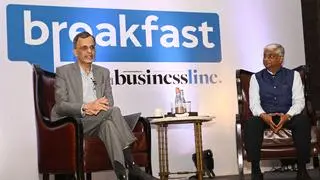Retail inflation surged to a seven-month high in May. It is the fourth consecutive monthly rise. But there is some good news as the financial year 2019-20 began on a positive note with the industrial sector registering 3.4 per cent growth in April.
The data is critical as the General Budget is scheduled to be presented on July 5. Though the latest monthly data is encouraging, the overall industrial scenario is not so upbeat, as various sectors, and in particular the automobile and FMCG sectors, are facing slowdown in sales — a reason for India Inc to seek some relief and incentives in the Budget.
Though the rate of retail inflation has gone up, it is still below 4 per cent, the median rate for inflation targeting. This opens the possibility of one more rate cut during the fiscal, if not in the August policy review. The MPC, chaired by the RBI Governor, went for three successive policy rate cuts with the latest one being earlier this month. It also changed its stance to ‘accommodative’ from ‘neutral’. Considering comprehensive and coordinated approach for growth, the market is expecting another rate cut and/or liquidity enhancing measures such as lowering cash reserve ratio (CRR).
Retail inflation
Rate of retail inflation as indicated by the Consumer Price Index (CPI) recorded 3.05 per cent in May, as against 2.99 per cent in April. This is highest after October, 2018. Food inflation (May 2019: 1.83 per cent, April 2019: 1.10 per cent) was the major driver for retail inflation.
Vegetables and pulses were major drivers of food inflation. Vegetables inflation at 5.5 per cent was 11-month high and pulses witnessed inflation after a gap of 29 months. While vegetables inflation is mainly due to summer seasons and are cyclical in nature, the expectation is that it is likely to go up further as prices tend to rise during the monsoon.
Sunil Kumar Sinha, Principal Economist at India Ratings, said the RBI may continue to pursue policy that would be supportive of growth. “The RBI has cut policy rates in the last three monetary policy reviews. Although the impact of the monetary policy is felt with a lag, India Ratings believes there is still a scope of one more rate cut in FY20. However, besides being dependent on data it will also take into consideration fiscal policy stance of the government,” he said.
Industrial Growth
Meanwhile, industrial growth, as indicated by Index of Industrial production (IIP) rose to 3.4 per cent in April as against the revised 0.35 per cent in March, however lower than 4.5 per cent during May 2018. At a broad classification level the main thrust to IIP growth came from electricity and mining sector but growth in the manufacturing sector is still below 3 per cent which is affecting not just overall industrial growth but also employment scenario,
According to Sinha, the whole picture is not very encouraging on the industrial production front. “Ind-Ra has been consistently articulating that given the fluctuation in the IIP growth data it is difficult to believe that we are on our way or anywhere near to a broad based and sustainable industrial recovery,” he said.








Comments
Comments have to be in English, and in full sentences. They cannot be abusive or personal. Please abide by our community guidelines for posting your comments.
We have migrated to a new commenting platform. If you are already a registered user of TheHindu Businessline and logged in, you may continue to engage with our articles. If you do not have an account please register and login to post comments. Users can access their older comments by logging into their accounts on Vuukle.